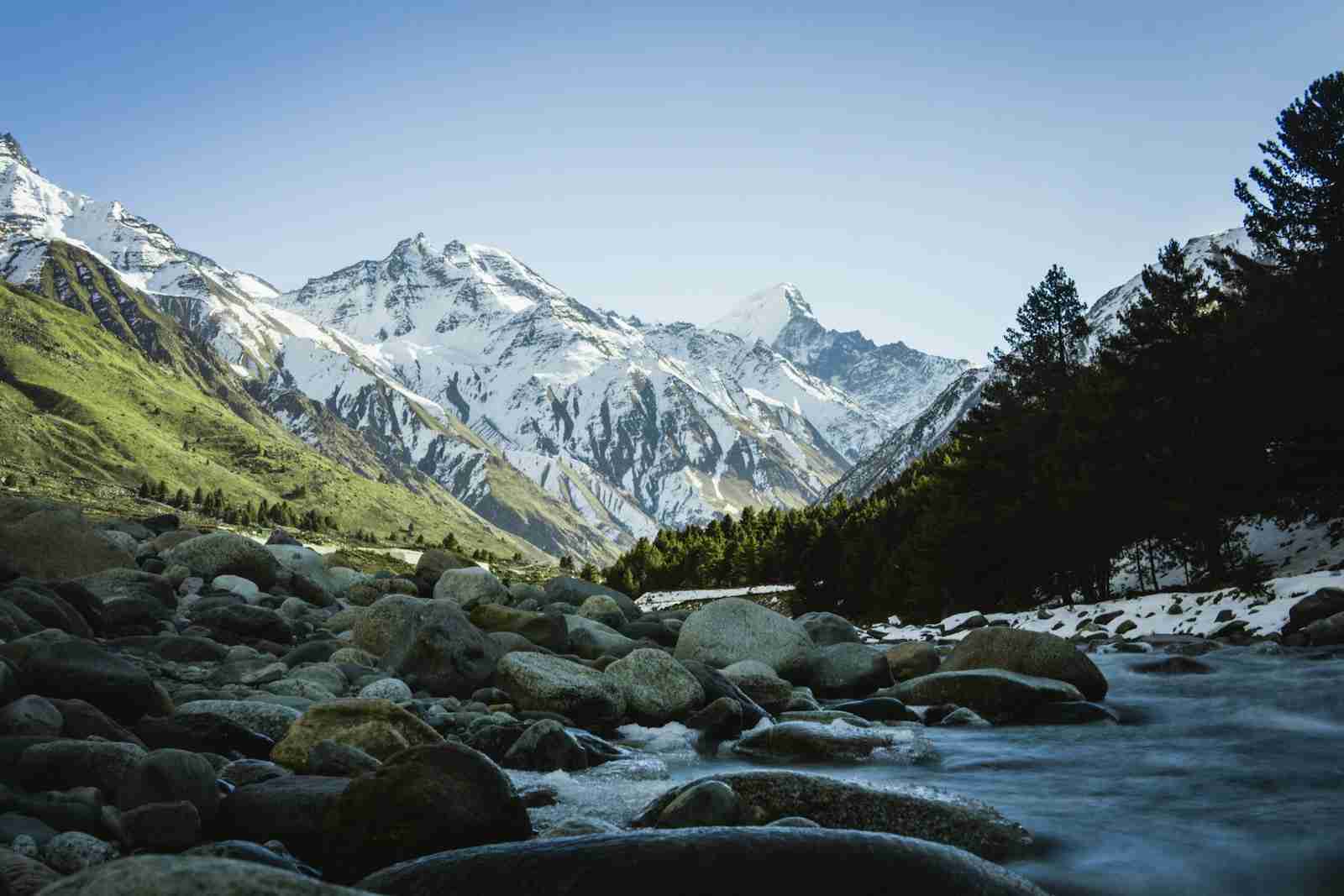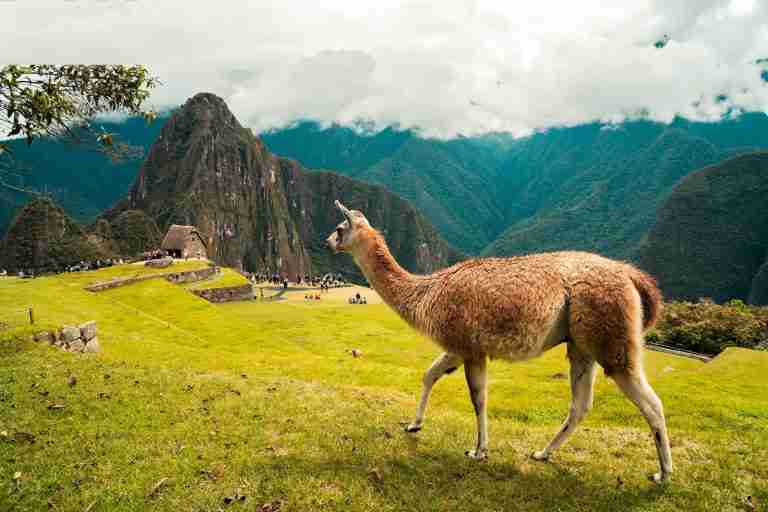23 Fun Facts About the Himalayas: Beyond the Peaks
1. The Himalayas are still growing, rising about 5 mm annually.
The Himalayas continue to expand upwards each year. This majestic mountain range grows approximately 5 millimeters every year due to tectonic plate movements.
This dynamic process has been ongoing for millions of years, making the region geologically fascinating.
2. The name Himalaya means abode of snow in Sanskrit.
The term Himalaya has its roots in the ancient Sanskrit language. It translates to a place where snow resides.
This name perfectly represents the mountain range, known for its snow-capped peaks that shimmer beautifully under the sun, offering a breathtaking sight for all who visit.
3. Pakistan’s Gilgit District, Jaglot marks the remarkable meeting point of three mighty mountain ranges.
The town Juglot in Gilgit Pakistan holds significant geographical importance as it marks the meeting point of three imposing mountain ranges: the Himalaya, Karakoram, and Hindukush.
The Himalaya Range, extending over 2,400 km, stretches across Pakistan, China, India, Nepal, and Bhutan. The Karakoram Range, covering a distance of 500 km, is jointly shared by Pakistan and China.
The Hindukush Range blankets western Pakistan and extends into Afghanistan.
4. The Himalayas are home to the mysterious snow leopard.
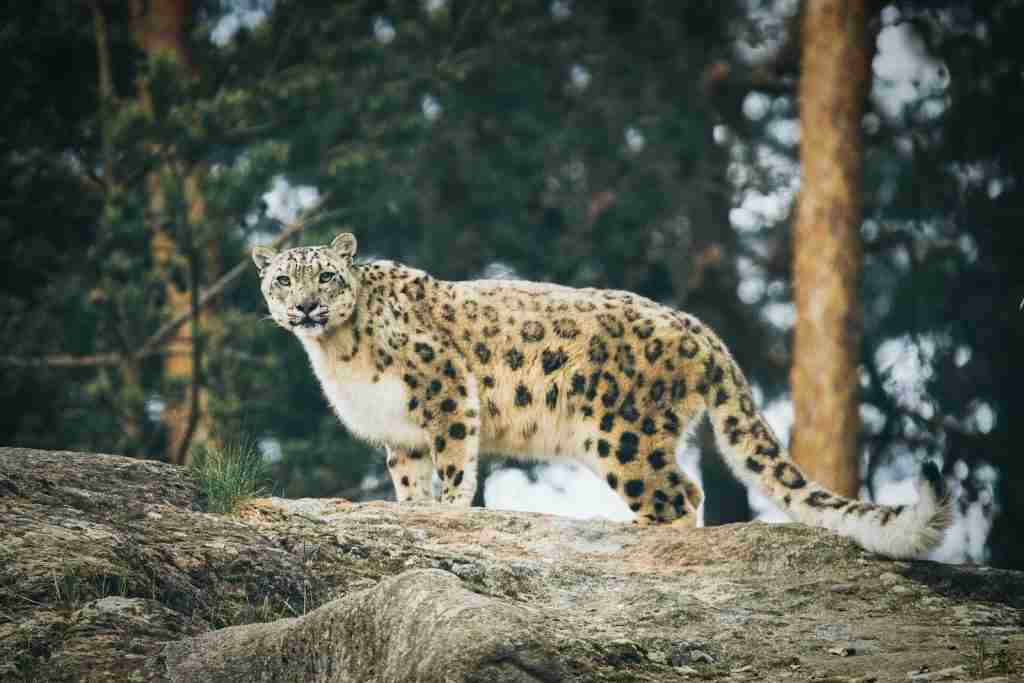
One of the Himalayas’ most intriguing inhabitants is the snow leopard. These elusive big cats, often referred to as Ghosts of the Mountains, have adapted perfectly to the cold, rugged terrains, making them a symbol of the region’s rich biodiversity.
5. Pangong Tso, a lake in the Himalayas, changes colors.
Pangong Tso is a mesmerizing lake situated in the Ladakh region of the Himalayas. What makes it truly fascinating is its ability to change colors.
Depending on the time of day and angle of the sun, it can transform from shades of blue to green and even display reddish hues.
6. Mount Kailash is considered the world’s most sacred mountain but remains unclimbed.
Mount Kailash, standing at an elevation of 6,714 meters in the Tibet Autonomous Region near the Himalayas, is revered across multiple religions as the world’s most sacred mountain.
Despite its towering presence, it remains untouched by climbers due to its profound religious significance.
7. The Himalayas influence monsoons, affecting billions in Asia.
The massive presence of the Himalayas plays a pivotal role in directing the monsoon winds.
These mountains act as a barrier, causing heavy rainfall on the southern slopes, which has a direct impact on the livelihoods and agriculture of billions of people across Asia.
8. The range spans six countries: India, Nepal, Bhutan, China, Afghanistan, and Pakistan.
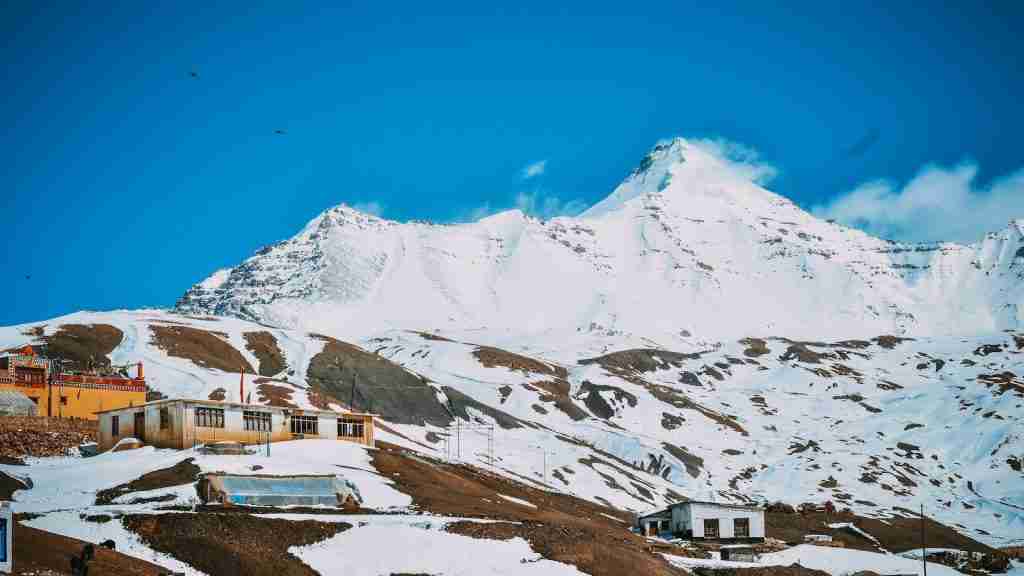
Stretching approximately 2,500 kilometers (1,500 miles) in length, the vast Himalayan range gracefully weaves its way through five nations: India, Nepal, Bhutan, China, Afghanistan, and Pakistan, serving as a majestic natural border and showcasing diverse landscapes and cultures within its expansive stretch.
9. The Himalayan Jumping Spider lives at 22,000 feet.
In the dizzying heights of the Himalayas, there’s a tiny but impressive creature: the Himalayan Jumping Spider.
Remarkably, this spider has adapted to life at elevations of around 22,000 feet. This makes it the highest-living predator on Earth.
10. In Ladakh, ice stupas were innovated to combat climate change.
Ladakh, nestled within the Himalayas, introduced a groundbreaking solution to combat climate change: ice stupas. These innovative structures were conceived to address water scarcity issues caused by melting glaciers.
They ingeniously freeze and store water during winter months, ensuring a sustainable water source for communities during drier seasons.
11. The Himalayas glaciers are sometimes called the Third Pole.
Often referred to as the Third Pole, the Himalayan glaciers are akin to the Earth’s polar regions in their importance. These glaciers play a vital role in maintaining freshwater supplies for countless people in Asia.
Just like the North and South Poles, the Himalayan glaciers are essential for regulating climate and supporting life across the region.
12. The Yeti, a legendary snowman, is believed to inhabit the range.
The Himalayas are not only known for their breathtaking beauty but also for the legends that shroud them. One such legend is that of the Yeti, often called the Abominable Snowman.
This mythical creature is said to dwell in the secluded, snow-covered mountains, primarily in Nepal and Tibet. Described as a towering, furry being resembling an ape or giant bear, the Yeti has captured the imaginations of adventurers and storytellers alike.
13. There are over 110 peaks in the Himalayas exceeding 24,000 feet.
Within the Himalayan range, there are over 110 peaks that reach heights exceeding 24,000 feet (7,300 meters). Notable among them are Mount Everest at 29,032 feet (8,849 meters), K2 at 28,251 feet (8,611 meters), Kangchenjunga at 28,169 feet (8,586 meters), and Lhotse at 27,940 feet (8,516 meters).
These towering summits draw adventurers and explorers seeking to conquer their formidable heights.
14. How Himalayas were formed?
The formation of the Himalayas is a geological tale of monumental proportions. It began around 50 million years ago when the Indian subcontinent, then a separate landmass, started its northward journey.
As it collided with the Eurasian tectonic plate, immense forces folded, crumpled, and uplifted the Earth’s crust, giving birth to the majestic Himalayan mountain range.
15. Despite their size, the Himalayas are relatively young, at 50 million years old.
The Himalayas, despite their towering grandeur, are relatively youthful in geological terms, with an age of approximately 50 million years.
Their dramatic rise and ongoing growth serve as a testament to the relentless forces of tectonic activity that continue to shape our planet.
16. Himalayan forests act as carbon sinks, helping to combat global warming.
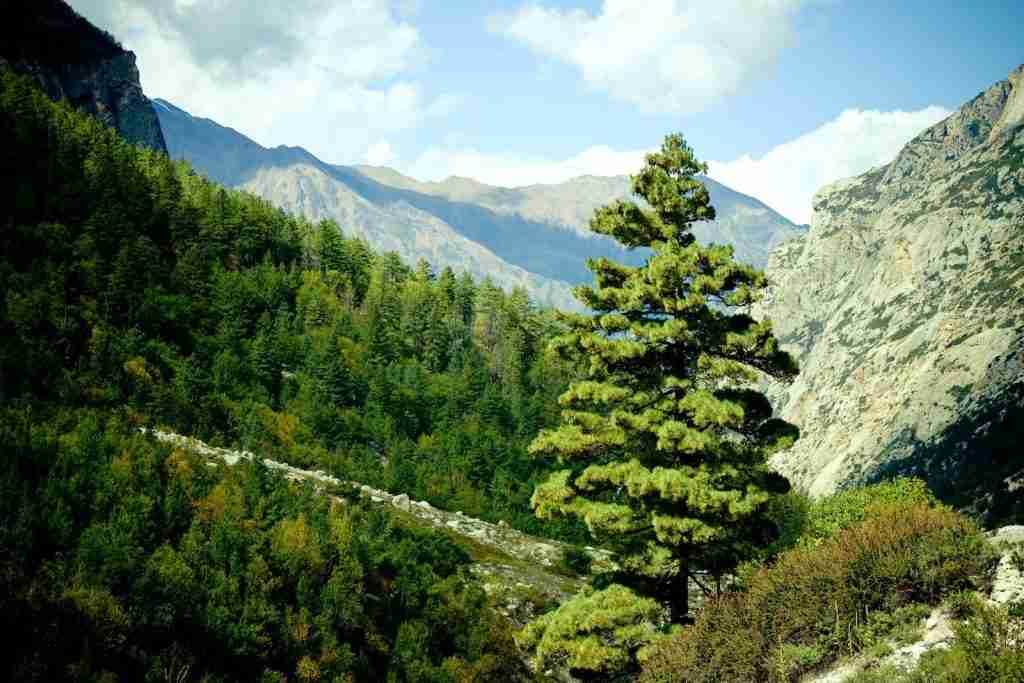
The Himalayan forests play a crucial role in mitigating global warming by acting as valuable carbon sinks. These lush woodlands, teeming with biodiversity, absorb and store significant amounts of carbon dioxide from the atmosphere.
This essential function aids in reducing greenhouse gas levels and combatting climate change, contributing to the well-being of the planet and all who call it home.
17. The Himalayas are home to a diverse range of plant, bird, and mammal species, many of which are endangered.
The Himalayas are teeming with life, serving as a haven for unique wildlife such as Bengal tigers, Asian elephants, and one-horned rhinos.
Elevated terrains are home to elusive creatures such as the snow leopard and red panda, and the region’s rivers are one of the last refuges for the rarely seen Gangetic dolphins. Surprisingly, it’s a rare location where elephants, tigers, and rhinos coexist.
In this region, 163 species are on the verge of extinction, with a few mammals, birds, reptiles, and amphibians in particular danger. The majestic Greater one-horned rhinoceros, the revered Asian elephant, and the enigmatic snow leopard are among those facing the most serious threats.
18. The Silk Route connected the Himalayan region with the Mediterranean.
Centuries ago, the Himalayan region was intricately linked to the Mediterranean through the historic Silk Route, connecting countries like India, China, and many others. This ancient trade network facilitated the exchange of goods, cultures, and ideas across vast distances.
Caravans carrying silk, spices, and precious commodities navigated the rugged mountain passes, forging connections that shaped the diverse heritage of the region.
19. Red pandas, unique to the region, inhabit the Himalayas, which is one of the fun facts about the Himalayas.
In the Himalayas, you’ll encounter the enchanting red panda, a species as unique as its mountainous habitat. These endearing creatures, often referred to as “fire foxes” due to their rust-colored fur, are exclusive to the Himalayan region.
Their presence adds to the region’s rich biodiversity, capturing the hearts of nature enthusiasts and conservationists alike.
20. The Himalayas have over 15,000 glaciers, storing about 12,000 km^3 of freshwater.
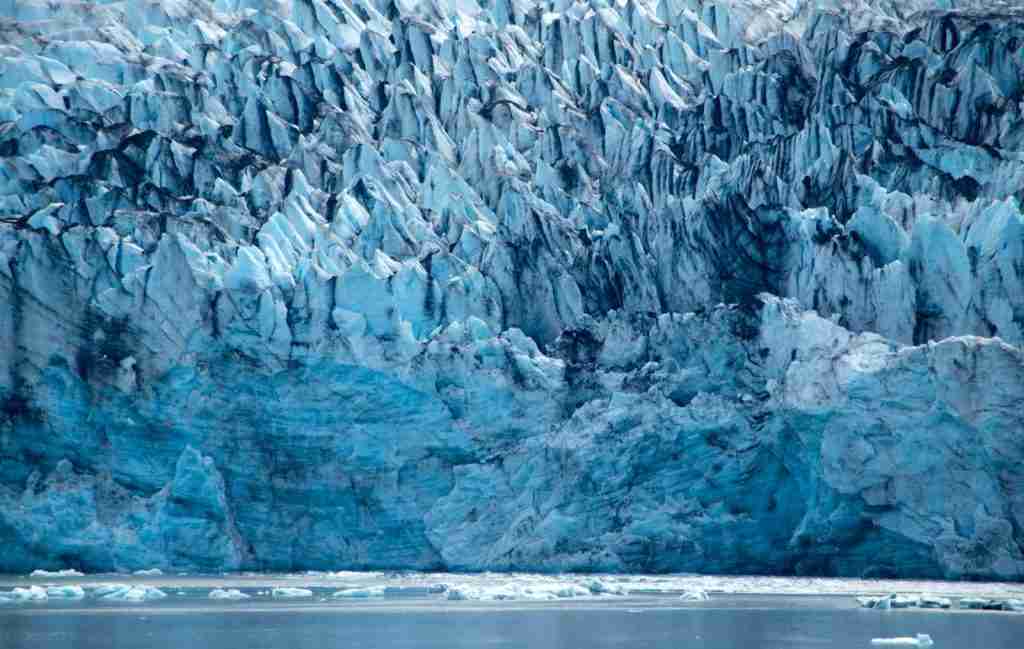
The Himalayas boast a staggering expanse of over 15,000 glaciers, including giants like Siachen, Gangotri, and Zemu. These icy behemoths collectively store an astounding 12,000 cubic kilometers (km³) of freshwater.
This frozen reservoir not only sustains life across the region but also plays a crucial role in regulating river flow and nourishing the lands downstream.
21. Himalayan glaciers are a vital water source for major rivers like the Yangtze, Ganges, and Indus.
Himalayan glaciers are the lifeblood of Asia, serving as the primary water source for some of the continent’s major rivers, including the Yangtze, Ganges, and Indus.
As they slowly release their icy treasure, these glaciers quench the thirst of millions, irrigate fertile plains, and support ecosystems vital for biodiversity.
The fate of these rivers is intrinsically linked to the health of the Himalayan glaciers, making their conservation paramount.
22. The Himalayan region has Sky Caves carved into cliffsides.
In the Himalayan region of Nepal, you’ll discover the fascinating Sky Caves, carved into steep cliffsides. These ancient caves, some dating back over 3,000 years, have served various purposes, from meditation retreats to shelters.
Their unique presence adds a layer of mystery to the Nepalese Himalayas.
23. The world’s highest polo ground is in Shandur, Pakistan, within the Himalayan range.
The world’s highest polo ground, located in Shandur, Pakistan, within the Himalayan range, stands at a breathtaking altitude of approximately 3,700 meters (12,100 feet) above sea level.
This remarkable sporting arena not only offers thrilling matches but also provides a stunning backdrop of towering peaks, making it a truly exceptional experience for both players and spectators.
FAQs:
Yes, the Himalayas are continuously growing. Due to the ongoing collision between the Indian and Eurasian tectonic plates, the range expands approximately 5 mm each year, showcasing the dynamic nature of our planet’s geology.
As for their location, the Himalayas majestically stretch across Asia. They weave through several countries, including Pakistan, China, India, Nepal, and Bhutan, serving as both a natural wonder and a geographical boundary for these nations.
The name “Himalaya” originates from the ancient Sanskrit language, with “hima” meaning “snow” and “alaya” meaning “abode” or “dwelling.” Thus, “Himalaya” translates to “the abode of snow.” It’s not attributed to a single individual, but rather to the ancient people who spoke Sanskrit and lived near or around these mountains.
Himalayan pink salt is believed to have numerous benefits. It contains essential minerals and trace elements that regular table salt does not. Many claim it can regulate water content throughout the body, promote pH balance, support respiratory health, and reduce signs of aging, among other benefits.
The Himalayas start in the Indus River Valley in Pakistan and extend to the Namcha Barwa region in Tibet, China, spanning approximately 2,400 kilometers. They separate the Tibetan Plateau to the north from the Indian subcontinent’s plains to the south.

